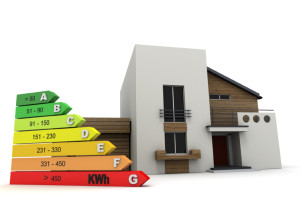Since its entry on 1st of June 2013 much has been said about the energy performance certificate but always from the point of view of the owner who is the person required by law to obtain the certificate, however some see it as another tax the government has pushed through and even a way to create jobs.
Here we easily explain how to interpret some of the ratings etc:
– Note that there are potential ratings can be a, b , c, d , e, f , g .
– Note that no average rating is between letters, so these letters mark the ” thumbs up” on energy efficiency
– Where a, b and c are indicative of lower energy consumption , and g marks greater consumption
– In this sense could be estimated , for example, for a standard household with an average receipt of supplies of 60 € / month if I had assumed that rating :
a spend less than average ( up to 35 € )
b spend less than average (35 € to 45 € )
c spend less than average (45 € to 54 € )
d spend half (57 € to 60 € )
e spend half (60 € to 66 € )
f spend more than average (66 € to 75 € )
g spend more than average ( minimum 80 € )
Remember that all contracts issued since 1st of June 2013 should have its certificate of efficiency, but it never hurts to request information from the owner of the monthly spending on energy, especially in the case of rental properties.
If you have a property on the market for sale or rent it is NOW THE LAW to have an energy certificate available to show prospective buyers or tenants, you could risk a fine if you do not have one.
For more information about obtaining an Energy Certificate for your property Click Here

